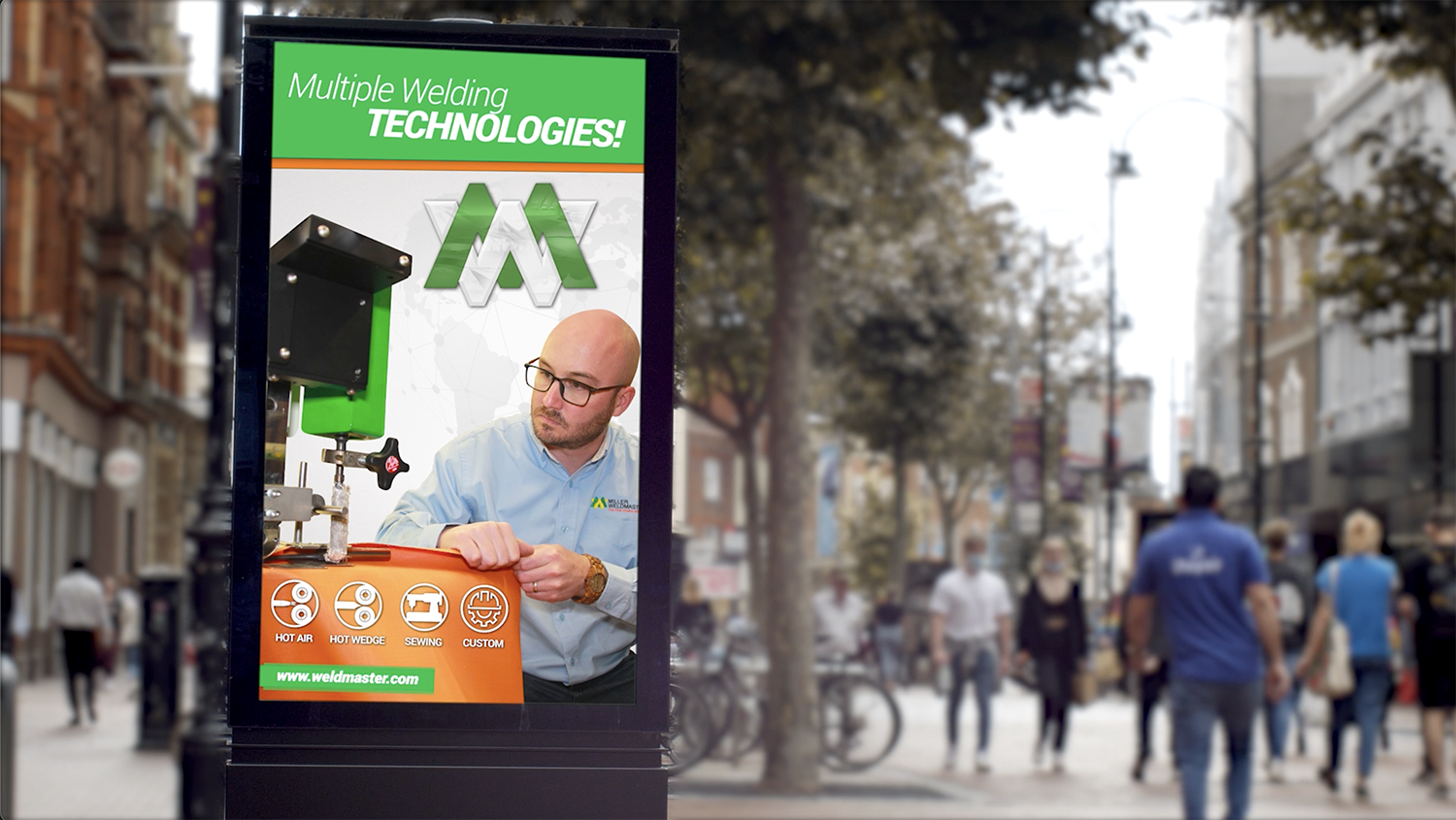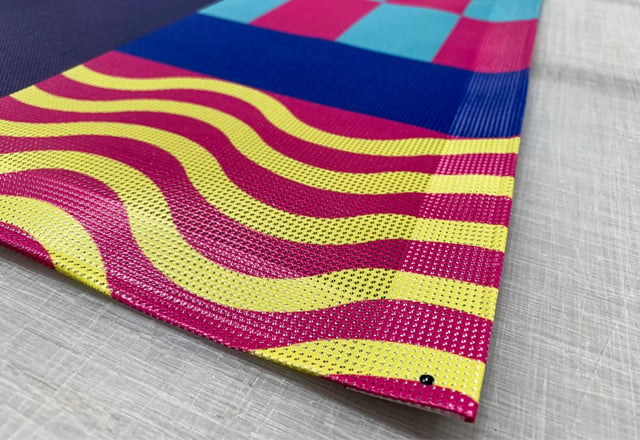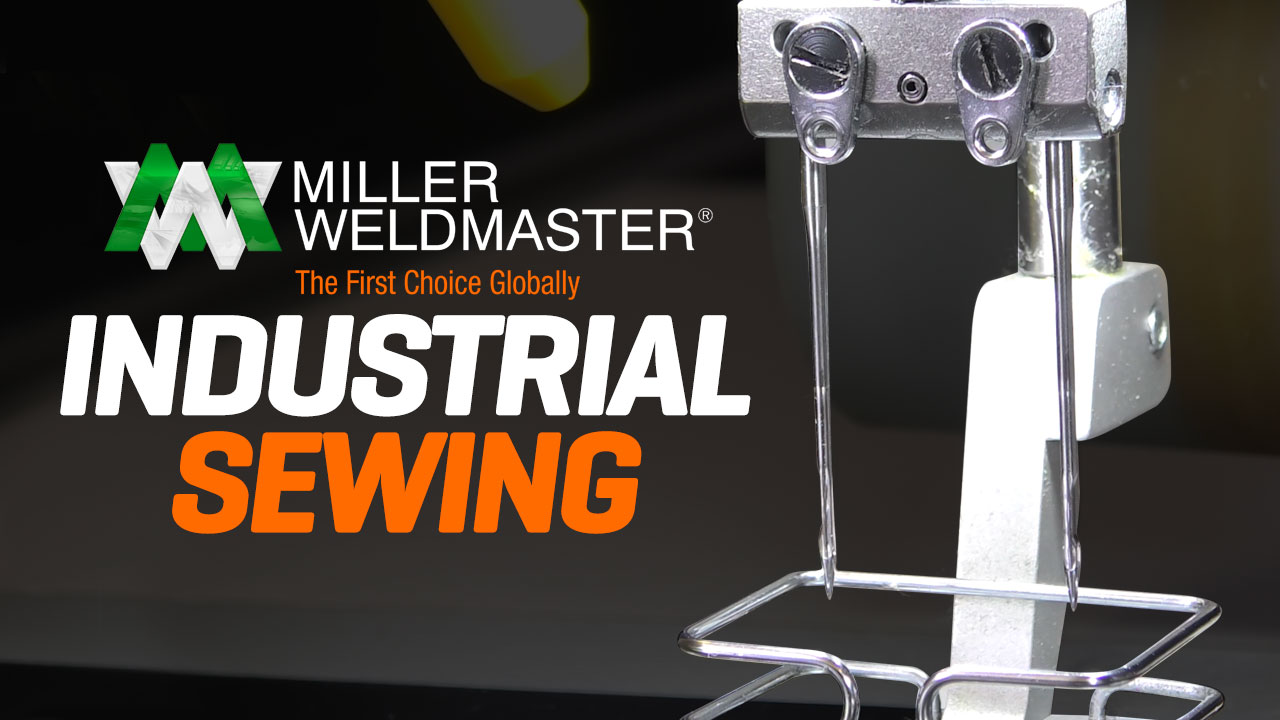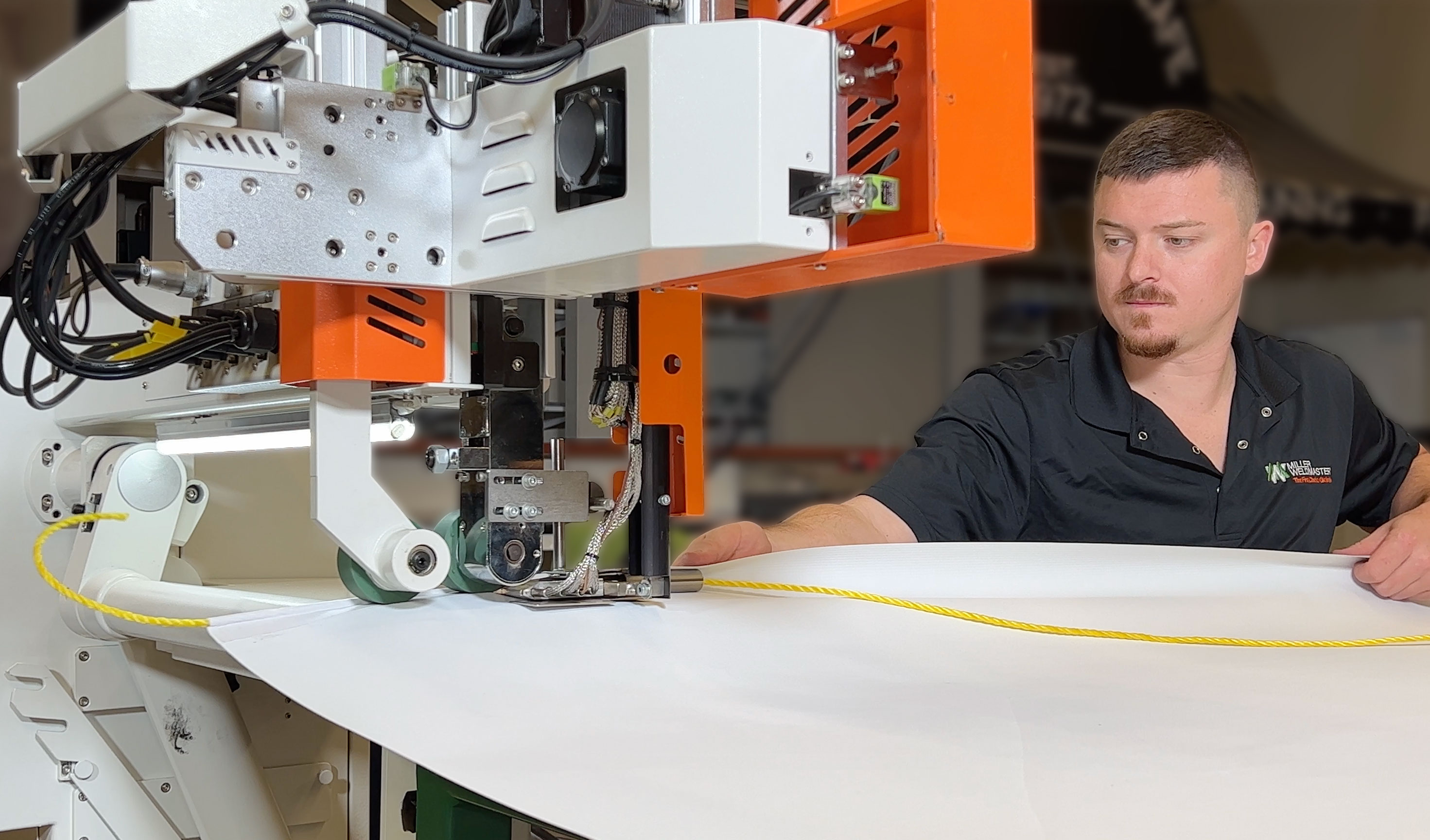Weld or Sew? Banner Finishing Techniques Compared
When it comes to banner welding vs sewing, the debate has long shaped how print shops and signage professionals approach vinyl finishing. Whether you’re a seasoned sign maker or new to the industry, selecting the right banner hem technique directly impacts the performance, appearance, and longevity of your product. The choice between welding and sewing not only determines the strength and durability of the finished product, but also affects how well the banner stands up to different environments and usage.
From durability and waterproofing to overall finish quality, this guide breaks down everything you need to know about finishing vinyl banners using welding, sewing, or tape. The type of banner material you choose, along with the method used to create banner hems, plays a crucial role in the overall durability and professional appearance of your banner. By the end, you’ll see why welding remains the industry standard for professional-grade seams.
Want to learn more about the broader sign and banner industry? Visit our Sign Industry Page.
What Is Banner Finishing? A Quick Overview
Banner finishing refers to the process of reinforcing the edges of printed or blank banners to improve durability and handling. Hemming is a crucial part of banner finishing, as it enhances both the durability and appearance of the banner. This is essential for hanging, transporting, and extending the lifespan of banners used for both indoor and outdoor applications.
There are three main banner hem techniques:
| Method | Tools Required | Cost | Time | Durability |
|---|---|---|---|---|
| Sewing | Industrial Sewing Machine | Medium | High | Medium |
| Hem Tape |
Double-sided Adhesive Tape (banner tape, banner hemming tape) |
Low | Low | Low |
| Heat Welding | Hot Air or Hot Wedge Welder | High | Low | Very High |
When sewing or taping, the edges of the banner are often folded to create a hem before being secured with thread or double sided tape. Heat welding (particularly hot wedge banner welding) is a mechanical process that fuses materials, eliminating stitching and adhesives altogether.
Banner Welding vs Sewing: Which Method Wins?
Let’s compare the two most common professional finishing methods: banner welding vs sewing. The best finishing method may vary depending on the specific job requirements, as factors like material, size, and intended use all play a role.
While welding and sewing are popular choices, other methods such as taping or gluing are also used for certain applications. However, welding is especially advantageous for large banners due to its superior strength and durability, making it ideal for billboards, building wraps, and other sizable graphic displays. Choosing the right process and tools for each job ensures the finished product meets the highest standards of quality and longevity.
Strength and Durability
-
Welded Seams: No holes or thread to fail. High tensile strength. Welding creates strong, clean banner edges that resist wear and provide superior durability, especially in demanding conditions.
-
Sewn Seams: Prone to fraying, breakage, and weakened by needle holes. Hemmed edges help prevent fraying and increase durability, but using a double layer of material at the hem further enhances strength and longevity.
Water Resistance
-
Welded Seams: 100% waterproof, perfect for outdoor use. Waterproof seams are especially important for outdoor banners, as they help protect the banner from rain and other environmental elements.
-
Sewn Seams: Water can seep through needle holes.
Seam Appearance
-
Welded Seams: Smooth, clean, and stitch-free. Welded seams are ideal for digitally printed banners because they do not distract from the graphics.
-
Sewn Seams: Visible threads can look unfinished or distract from graphics.
Labor and Production Time
-
Welded Seams: Faster once setup is complete, offering greater speed in production compared to sewing.
-
Sewn Seams: Slower, especially on high runs.
| Method | Longevity (Years) | Strength (lbs/in) |
| Welded | 5+ | 50–80 |
| Sewn | 2–4 | 20–40 |
Welding eliminates the problems of needle punctures, thread deterioration, and inconsistent tension.
How Does Heat Welding Work?
Heat welding is the process of using heating and pressure to bond synthetic materials like vinyl together, fusing two surfaces or two pieces of material to create a permanent seam without any stitching or glue. This process is commonly used to join materials for banners, building wraps, and other large-format graphics. Some welding methods can join two or more pieces of material at once, which is especially useful for large banners and building wraps.
There are several common types:
-
Hot Air Welding: Blasts high-temperature air between two layers of fabric to melt and fuse them, reducing material handling and increasing efficiency for large projects.
-
Hot Wedge Welding: A type of hot wedge technology that uses a heated wedge (an element in the machine) sliding between material layers while pressure rollers seal the seam. Hot wedge technology produces stronger, cleaner welds with durability advantages over sewing or taping.
-
Impulse Welding: Uses electrical current to heat impulse bars (elements) that press and bond the material. Impulse welding is cost-effective, suitable for smaller shops, and effective for creating strong seams like hems and pole pockets.
-
RF Welding / Radio Frequency / High Frequency Welding: Utilizes electromagnetic fields generated by high frequency (radio frequency) energy to heat and fuse materials. The operator sets up the banner welder, which uses metal electrode elements to create strong, durable welds by bonding two surfaces or two or more pieces together. This welding solution is ideal for wide-format graphics and building wraps due to its speed and strength.
Banner welders are specialized machines designed for these processes, and manufacturers provide guidance on their use, including safety precautions and best practices. Welding can be used to produce pole pockets and reinforce grommets for mounting, ensuring banners are durable and easy to install. Proper folding of the material before welding or gluing is important to create strong seams and prevent tunnels.
Alternative welding solutions include chemical welding, which uses solvents to chemically fuse materials for a strong, waterproof seam, and gluing, where glue is applied (often with a brush) to fold and secure banner edges. While gluing is cost-effective, it can be messy and is less favored by professionals compared to welding or sewing.
The operator plays a key role in setting up, feeding materials, and managing the welding process to ensure quality and efficiency. Manufacturers and manufacturers' recommendations are essential for optimal results and safety.
Both hot air and hot wedge welding methods produce consistent, waterproof, and durable welds ideal for vinyl banners, building wraps, and other large-scale applications. Learn more about hot wedge welding techniques.
Pros and Cons of Banner Finishing Techniques
Sewn Hems: Traditional but Time-Consuming
| Pros | Cons |
| Widely known and used | Requires industrial sewing machine |
| Readily available supplies | Thread breaks, visible seams |
| Often chosen by those who want to sew their own banners for custom projects | Weak points from needle holes |
Hem Tape: Quick but Temporary
When it makes sense:
-
For short-term indoor banners
-
When welding or sewing equipment isn't available
-
When cost or time is extremely limited
Challenges:
-
Tape adhesive degrades in sun and moisture
-
Can peel over time
-
Doesn’t hold up in wind or high tension situations
Heat Welding: Clean, Durable, and Professional
Advantages:
-
Seamless finish with no visible stitching
-
Highest vinyl banner seam strength
-
Waterproof and wind-resistant
-
Ideal for large runs and high production settings
- Fully automatic welding machines can further increase production efficiency for large runs
Considerations:
- Small learning curve to operate machines
Why Welded Seams Are the Best Long-Term Choice
When evaluating banner finishing methods, durability over time should be the top priority—especially for outdoor applications.
Welded hems last longer, resist wear and tear, and maintain a cleaner appearance. Where hem tape peels and sewn seams unravel, welded seams remain intact after years of UV exposure, wind, and handling.
Benefits of welded banner seam durability:
-
Save on reprints and replacements
-
Lower lifecycle costs
-
Present a more professional appearance
"Since switching to welded seams, we’ve cut down banner returns by 80%. Customers love the look—and so do we." – Sign Shop Owner, Ohio
Use Cases from Sign Shops and Print Shops
Sign makers across the world are moving away from sewing and tape, increasingly adopting welding techniques for faster production speeds and longer-lasting results.
Real-World Transitions:
-
Before: Shop used hem tape for all banners. Banners returned with peeling edges after 1–2 months.
-
After: Switched to hot wedge welding. Seams lasted through harsh winters and high winds.
-
Before: Shop used sewing for 10+ years. Multiple machines and labor required.
-
After: Replaced sewing machines with one welding machine. Cut labor hours by 40%.
"We made the switch to welding, and the difference is night and day—both in quality and workflow."
Getting Started with Banner Welding Equipment
Thinking of upgrading your finishing method? Choosing the right banner finishing equipment starts with understanding your volume, materials, and seam requirements.
Beginner Considerations:
-
Weld width and strength needs
-
Compatibility with vinyl or other media
-
Available space and ventilation
A great starting point is the T300 Edge, a flexible machine built for banner production. While the initial investment is higher than sewing or taping, the long-term ROI pays for itself with faster production and fewer returns.
Why Miller Weldmaster Leads in Banner Welding
Miller Weldmaster has led the way in banner finishing equipment for decades—serving thousands of signage professionals across the globe.
From our wide range of welding machines to ongoing customer support and training, we focus on helping your business grow with reliable tools and expertise.
Explore our Sign Industry Solutions or visit our blog to learn more about banner welding techniques.
Final Thoughts: Whether you’re producing banners for grand openings, trade shows, or municipal signage, welded seams provide the best combination of strength, appearance, and value. Don’t let outdated methods limit your results—upgrade your banner finishing process today.
Frequently Asked Questions About Banner Welding vs Sewing & More
What is the most durable banner finishing method?
Heat welding is the most durable method. Welded seams outperform both sewn and taped options in terms of weather resistance, seam strength, and longevity.
Can I use hem tape for outdoor vinyl banners?
Hem tape is not recommended for outdoor use. Adhesives tend to break down in moisture, heat, and UV exposure, causing banner failure.
Why does sewing weaken vinyl banners?
Sewing introduces thousands of needle holes, creating micro-tears and stress points. These weak areas can fray or tear under tension or wind.
How does heat welding create waterproof seams?
Heat welding uses high temperatures and pressure to fuse materials at the molecular level. This eliminates gaps or holes, making the seam completely waterproof.
Is banner welding worth the investment for small print shops?
Yes—especially over time. While the initial cost is higher, the labor savings, faster production, and lower failure rate deliver ROI quickly.
What machine is best for welding banner seams?
The T300 Edge is a top choice. It’s versatile, beginner-friendly, and ideal for medium to high production environments.
Are welded banner seams more professional looking?
Absolutely. Welded seams offer a smooth, clean finish without visible stitching or tape. This creates a higher-quality appearance for any banner.
How fast is heat welding compared to sewing or taping?
- Welding: 1 banner every 2 minutes
- Sewing: 1 banner every 5-7 minutes
- Taping: 1 banner every 4 minutes (but with higher failure rate)
Can I weld banners made from other materials besides vinyl?
Yes. Welding also works on other thermoplastics like PE, PP, and coated fabrics. Always check material compatibility with your welder.
Do I need training to use a banner welding machine?
Basic training is recommended, and many machines come with onboarding support. At Miller Weldmaster, we provide tutorials, service assistance, and hands-on guidance.




